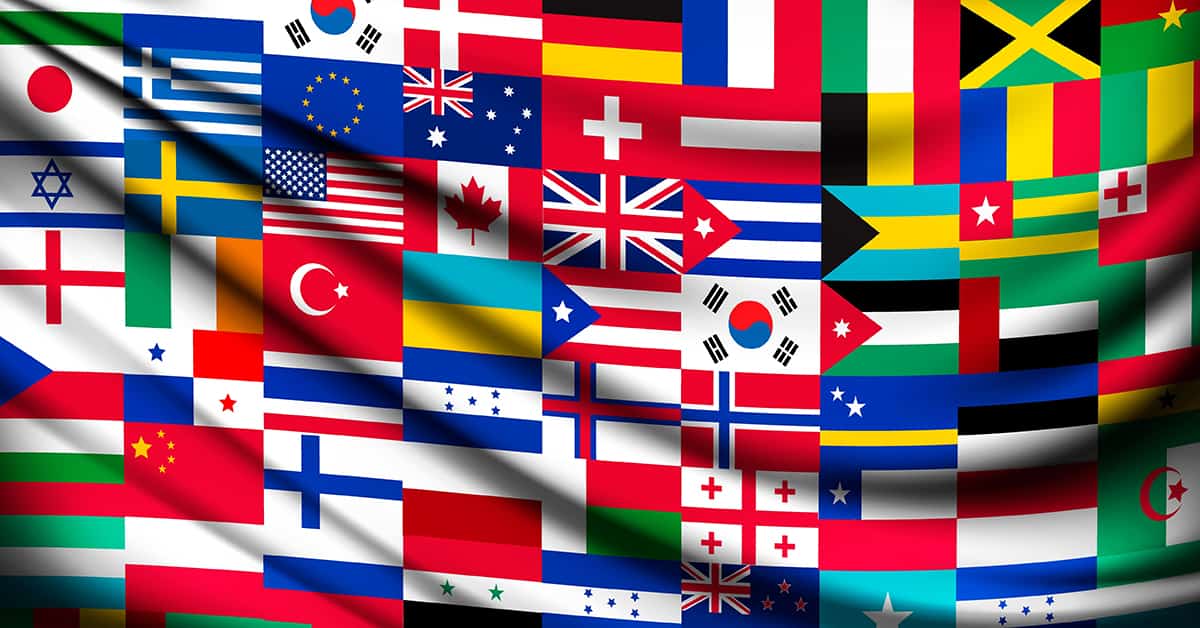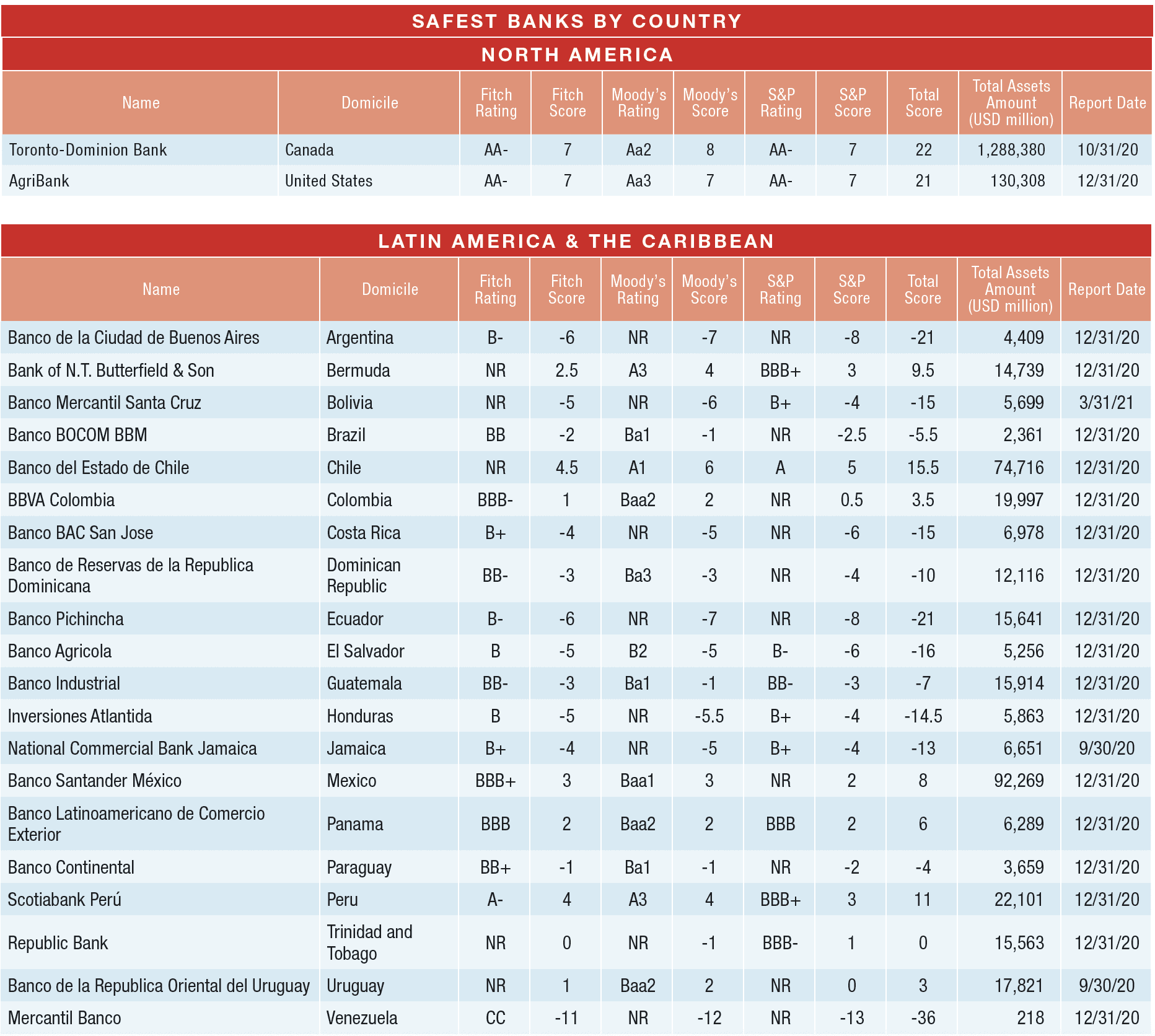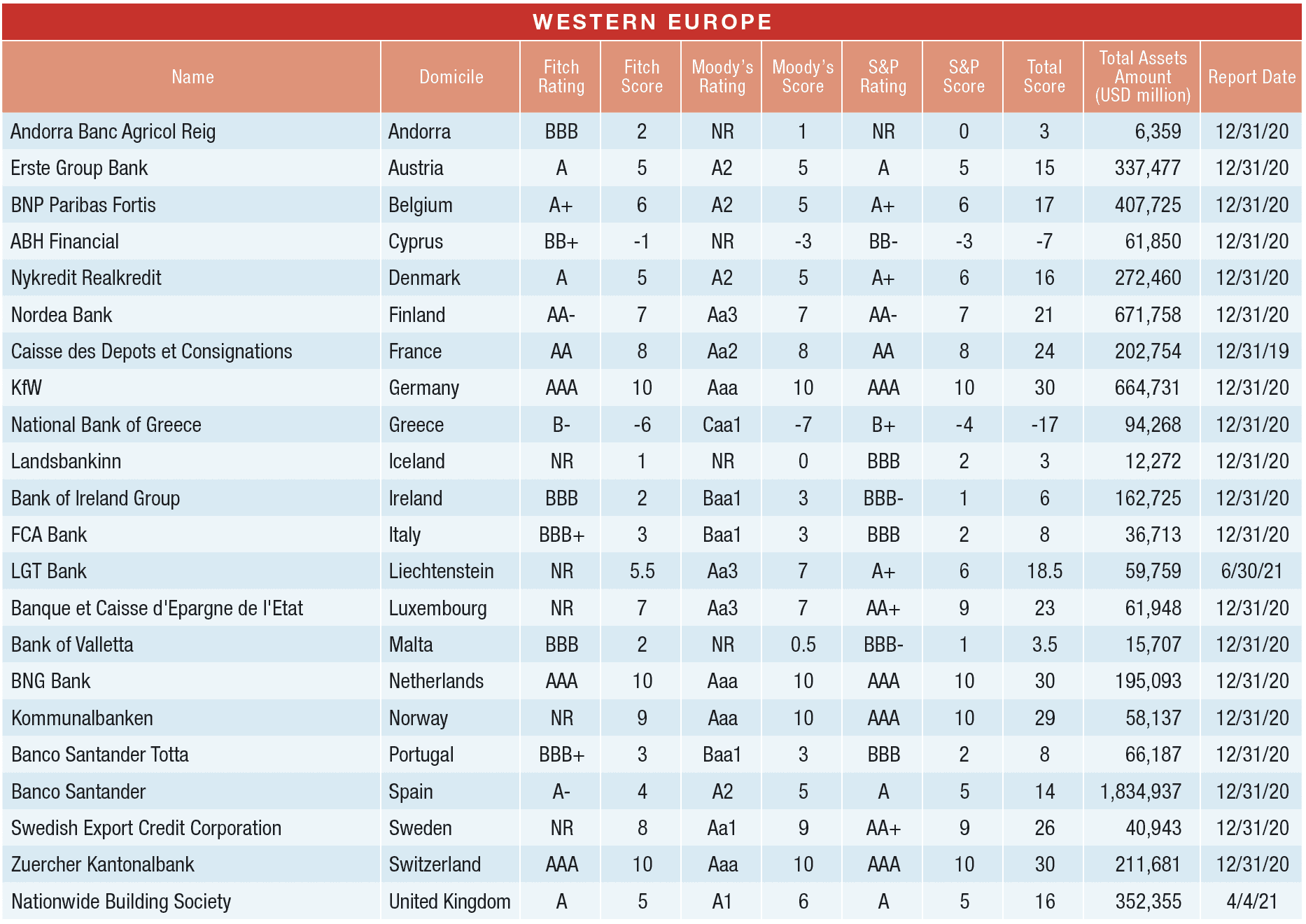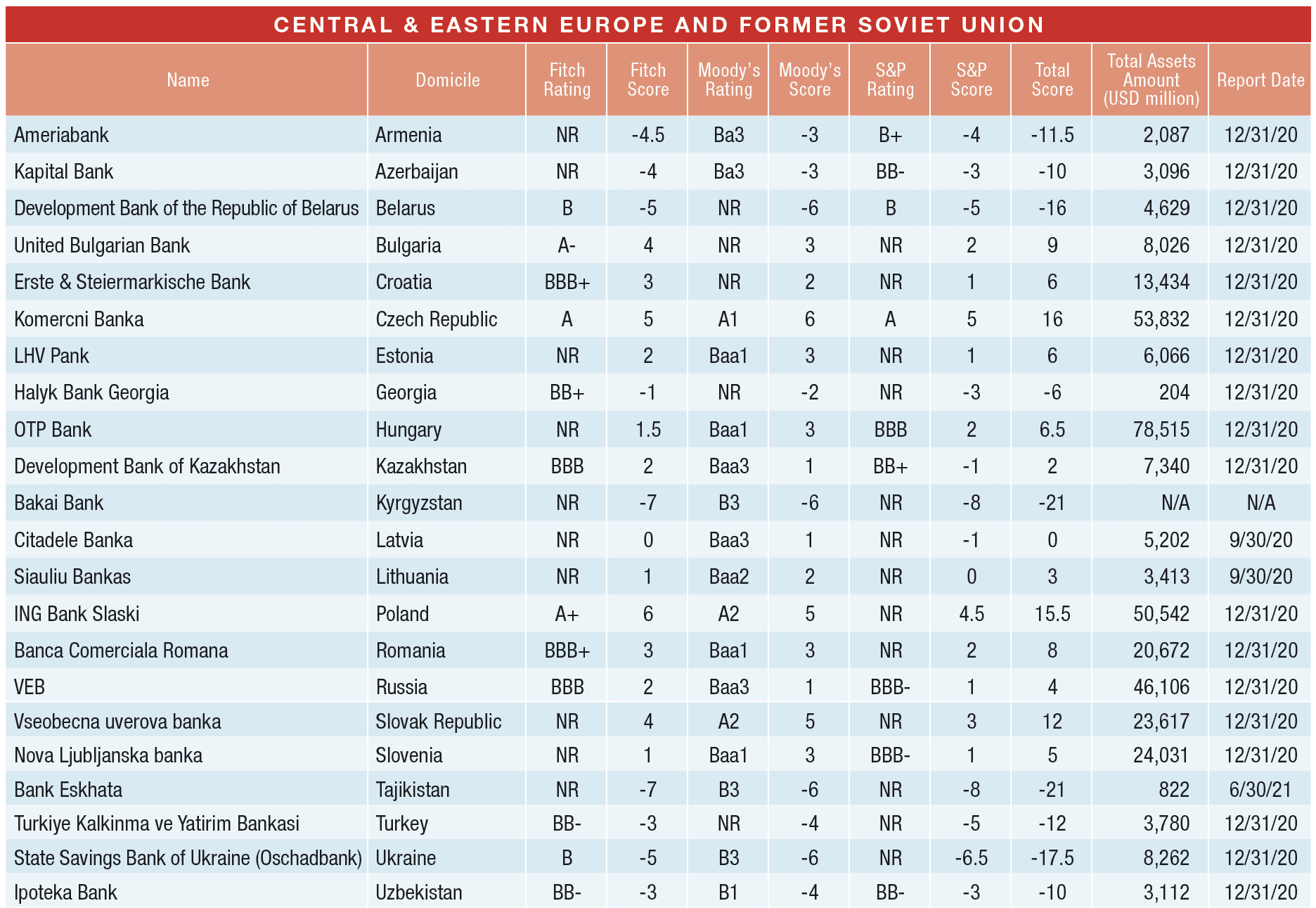Global Finance names 2021’s World’s Safest Banks by country.

Our rankings of the 2021 Safest Banks Country Winners provide an interesting window on the impact of Covid-19 on banking systems in 112 countries around the world. More than 18 months into the pandemic, there is greater clarity on the performance of the global banking sector in 2021, specifically with respect to the timing and extent of expected adverse trends, risks and losses. Stability has improved but the recovery is ongoing.
Shifts in the Safest rankings this year were attributable to several factors, one of the most common being the ripple effect of sovereign downgrades. Such is the case in Panama, as Banco Latinoamericano de Comercio Exterior (Bladex) replaces Banco General, which was downgraded by Fitch in February following the downgrade of the Panamanian sovereign. Bladex, however, maintains a rating above the sovereign, as the agency believes its high geographic diversification helps it offset any negative impact of Panama sovereign risks.
Similarly, Moody’s withdrew its rating on Argentine incumbent Banco Patagonia. Banco de la Ciudad de Buenos Aires saw its Fitch rating withdrawn as well—but not until after our cutoff date of August 31, 2021, so it remains at No. 1. Oman’s sovereign downgrade by S&P in October 2020 led to a downgrade of Bank Muscat, pushing it behind HSBC Bank Oman.
There were noteworthy upgrades, too. In Greece, Aegean Baltic Bank was replaced by National Bank of Greece, which benefitted from a Fitch upgrade in May based on improved asset quality from its derisking strategy. In December, several banks got an uplift when Moody’s raised their country’s ceiling, including Stanbic Bank Uganda and Brazil’s Banco BOCOM, a subsidiary of China-domiciled Bank of Communications. Unrated by Moody’s, incumbent Uganda Development Bank didn’t get the same boost. In Central and Eastern Europe, an April Fitch upgrade for Halyk Bank put it over Bank of Georgia. Ipoteka Bank got a Moody’s upgrade in December, displacing National Bank of Uzbekistan.
In Paraguay, government relief policies regarding asset quality deterioration during the pandemic was the differentiator allowing Banco Continental to replace Banco Regional as the winner. In April 2021, Moody’s downgraded Banco Regional, while Banco Continental’s Ba1 rating was affirmed. According to Moody’s, the April downgrade of Banco Regional reflected “significant challenges to the bank’s asset quality and profitability following its management’s decision to defer provisions for loan losses under the Paraguayan central bank measures.” These measures, announced by the central bank in 2020, allowed banks to restructure loans for a period of 18 months. Banco Regional placed more than 33% of its loans under special deferral measures. Had the bank been forced to boost reserves for the loans it placed under special measures before and during the pandemic, it would have recorded losses in both 2019 and 2020, thereby reducing its capitalization. By contrast, Banco Continental had limited use of this central bank program, and its Ba1 rating was affirmed.
Some merger activity contributed to new winners. The newly named Equity Banque Commerciale du Congo rises to the top following the merger of Equity Bank Congo and Banque Commerciale du Congo, the 2020 incumbent. In Saudi Arabia, this year’s new safest bank came out of April’s merger of National Commercial Bank and Samba Bank, which formed the new Saudi National Bank with a stronger rating profile than incumbent Saudi British Bank.
The catalyst that vaults some banks forward arises from our methodology: size by assets (the determining factor in the event of a tied score). That’s how Liechtenstein-domiciled LGT Bank unseated Liechtensteinische Landesbank and how Guaranty Trust Bank in Ghana edged out last year’s No. 1, United Bank for Africa. Similarly in Armenia, size put Ameriabank over Ardshinbank.
Methodology: Behind the Rankings
To be eligible for inclusion in the Country Winner rankings, entities must be among the largest 1,000 banks by assets and carry at least one long-term foreign currency deposit or debt rating from one of the three major rating agencies. Wholly owned subsidiaries are ineligible. In order to capture the safest bank for each country, the criteria must be broader than for the global rankings, which require a position among the largest 500 banks and rating by at least two agencies.







